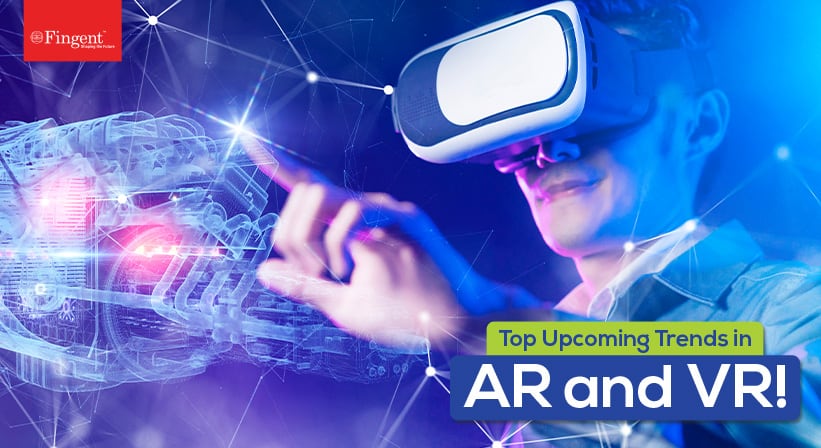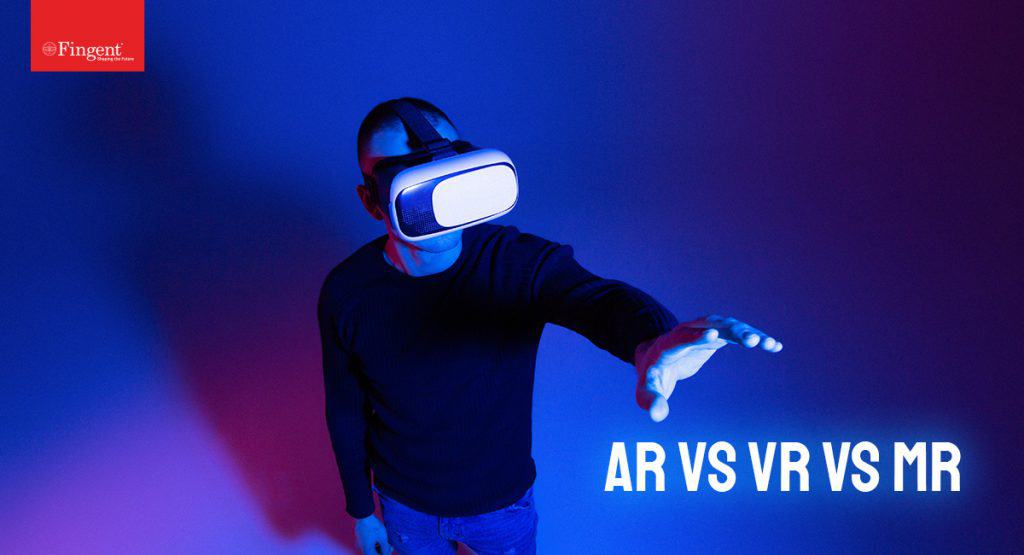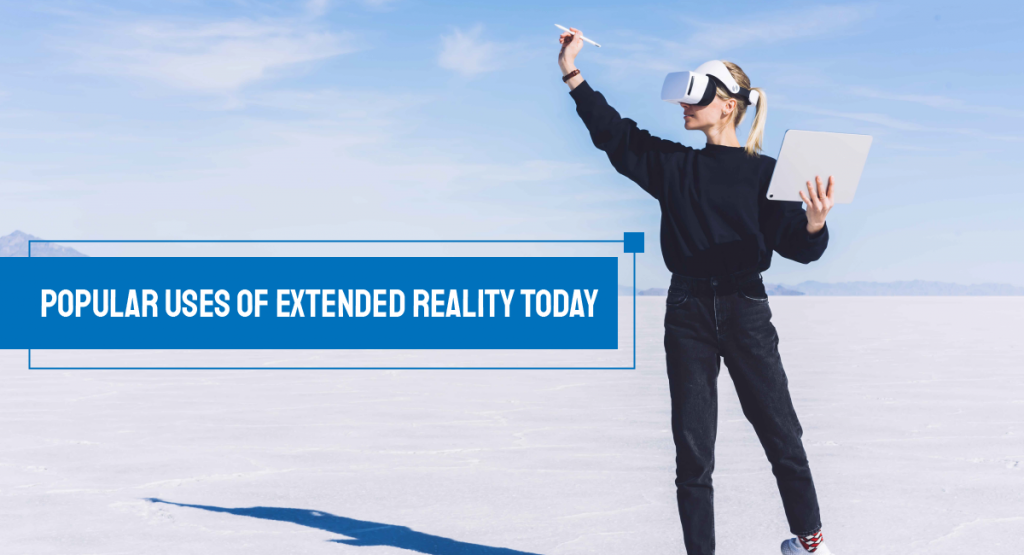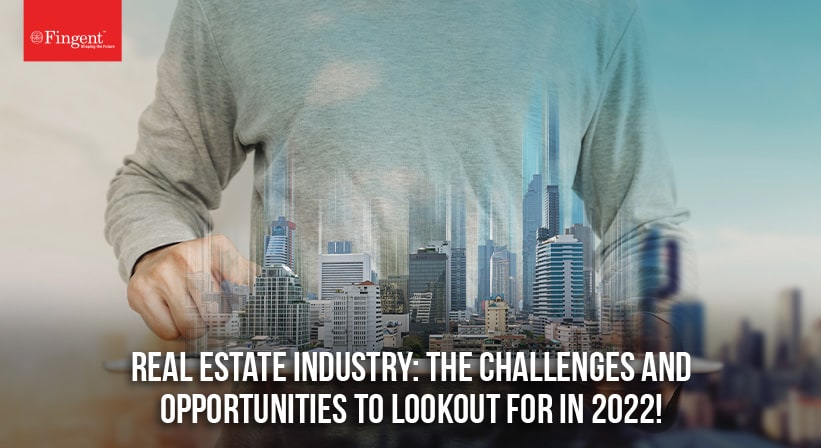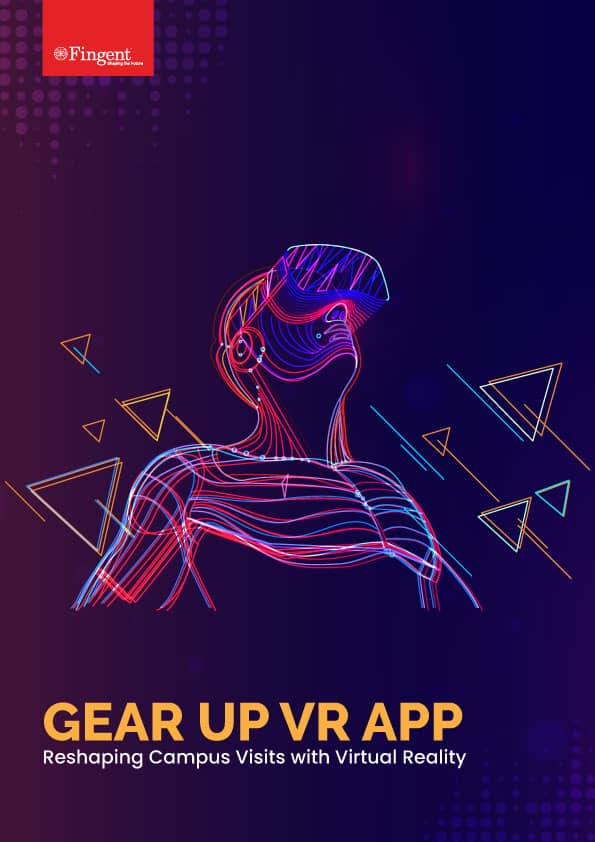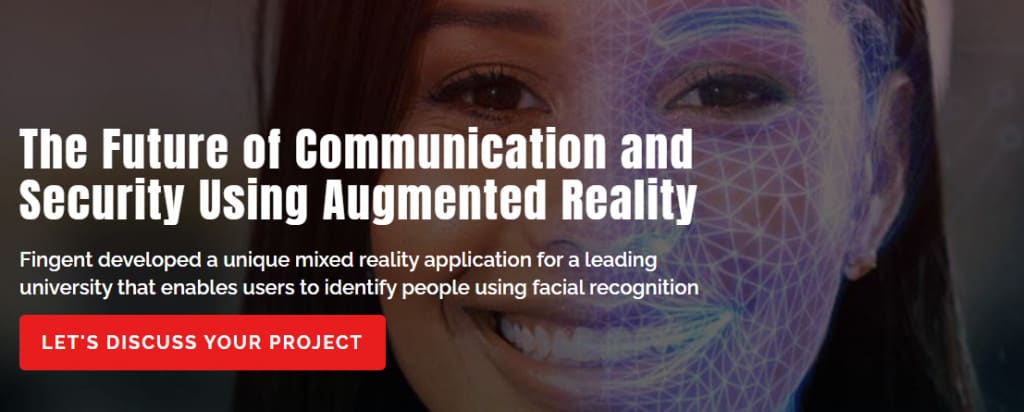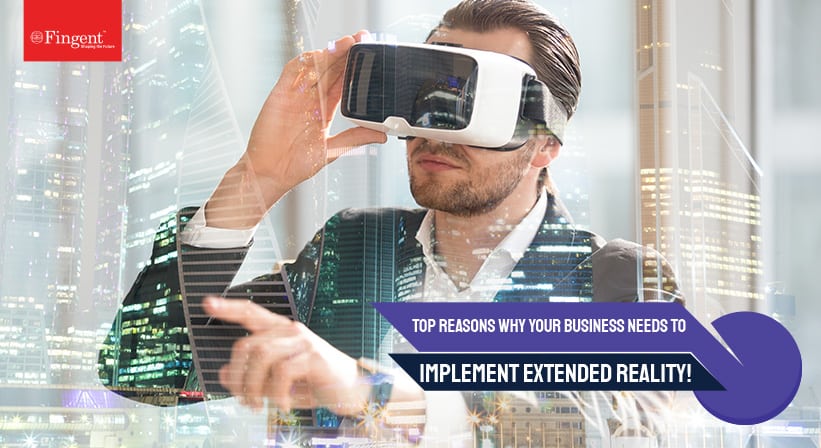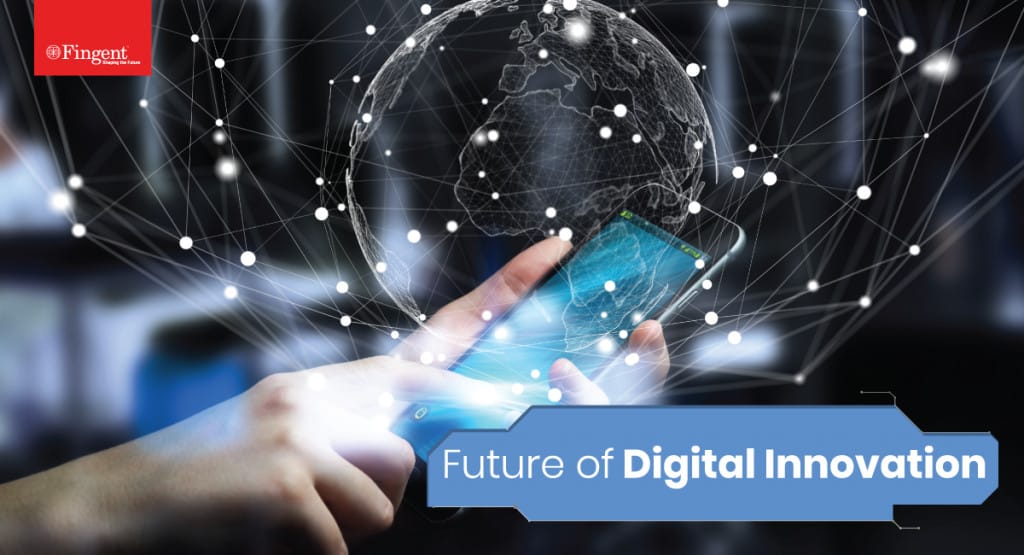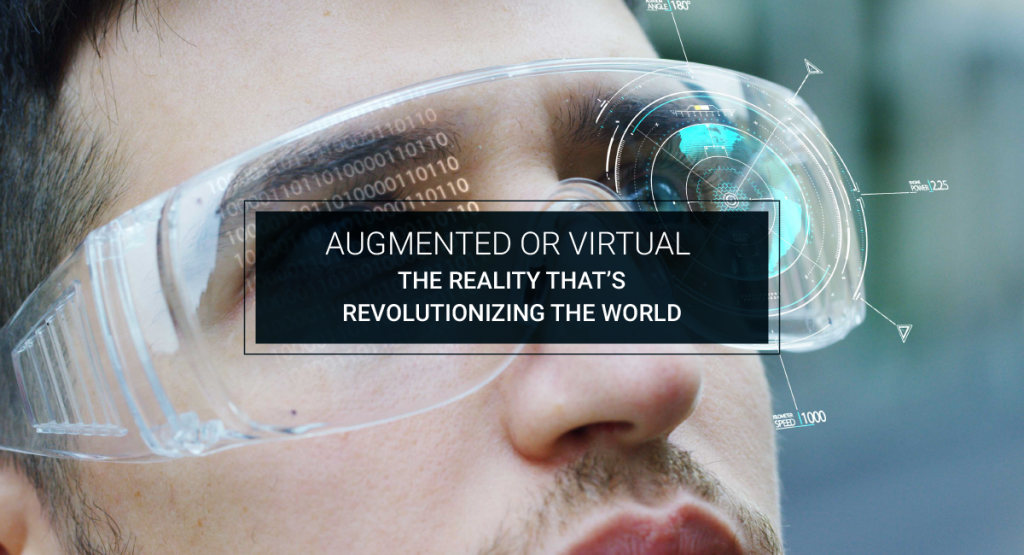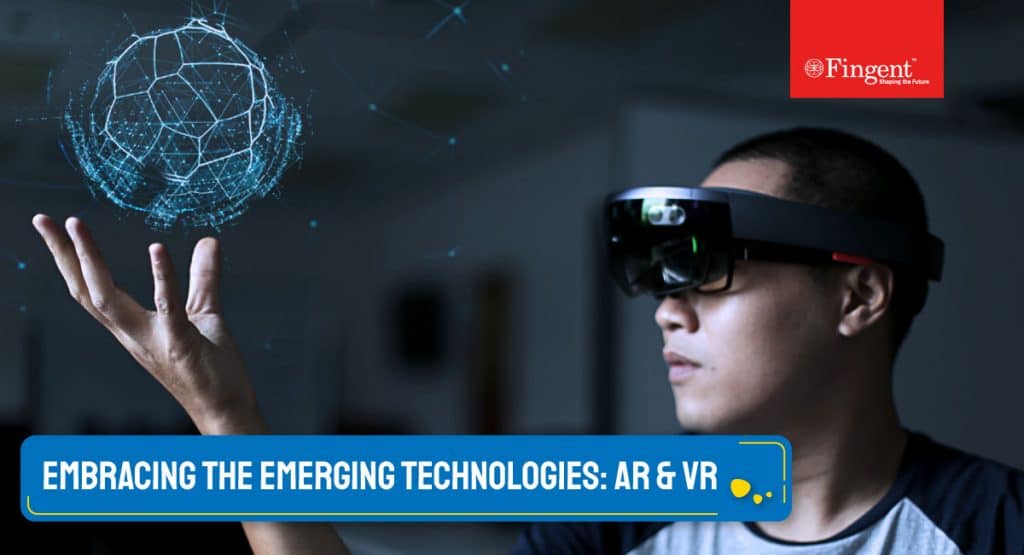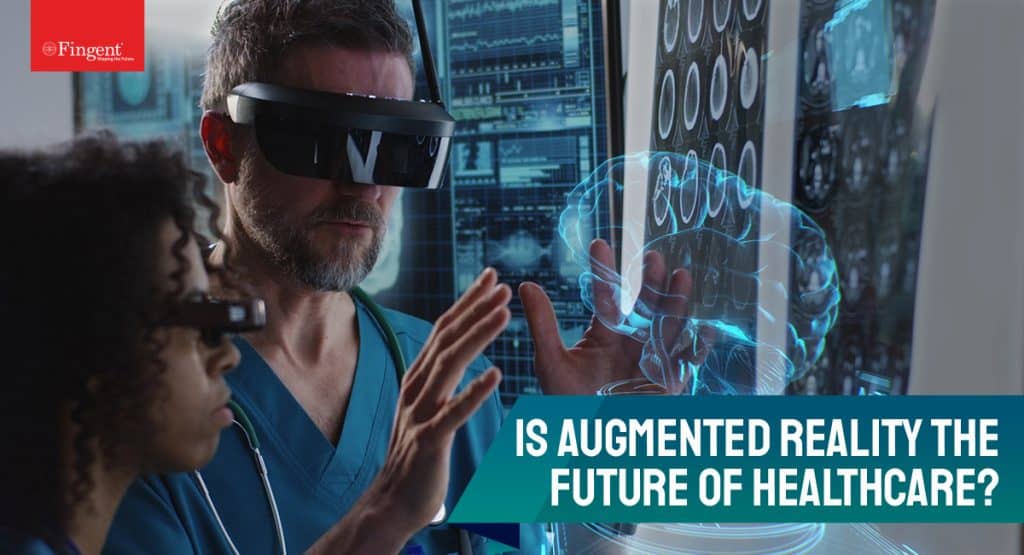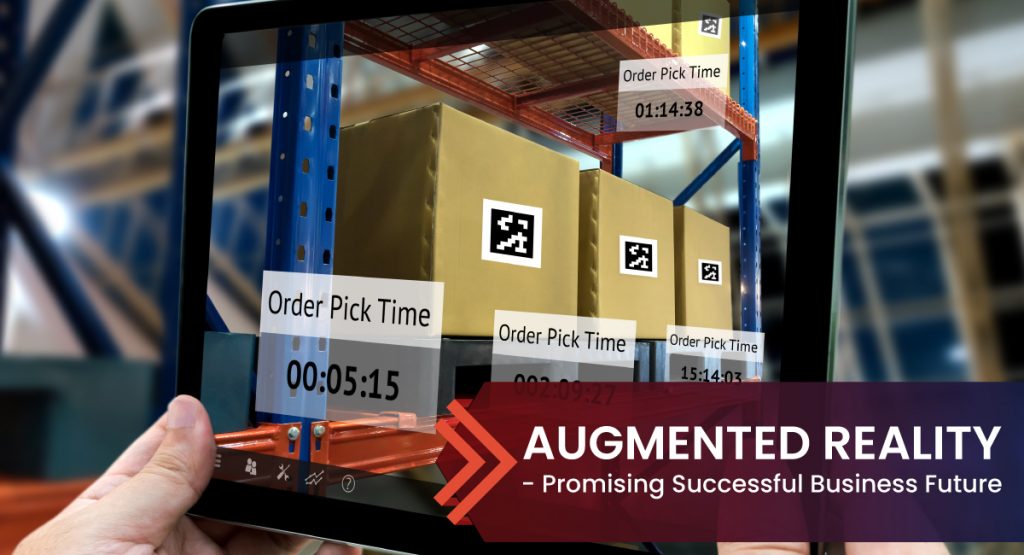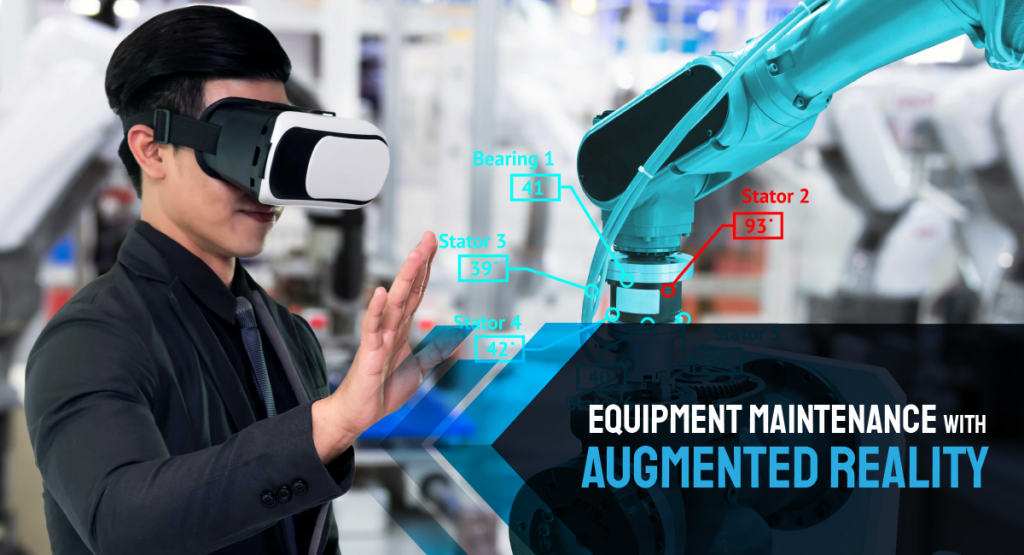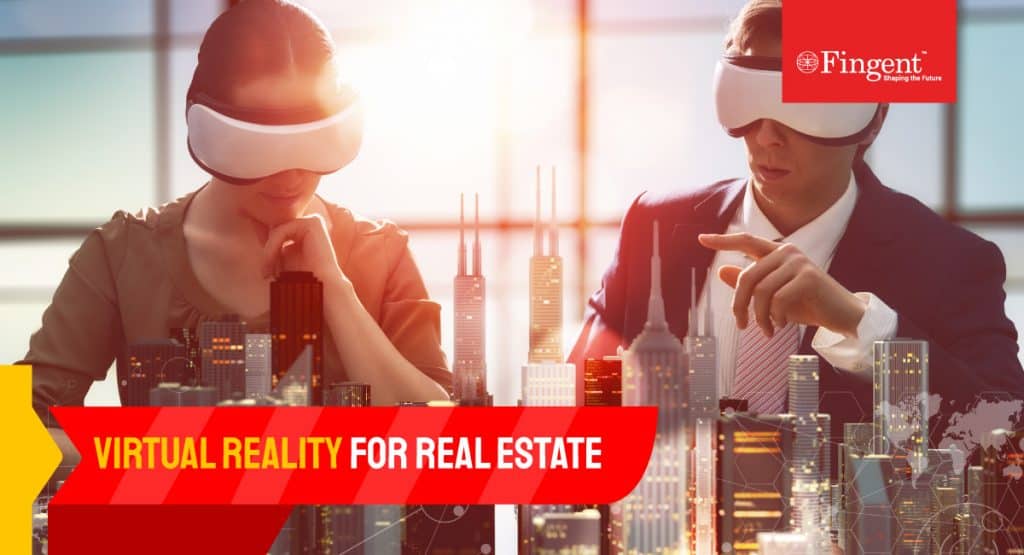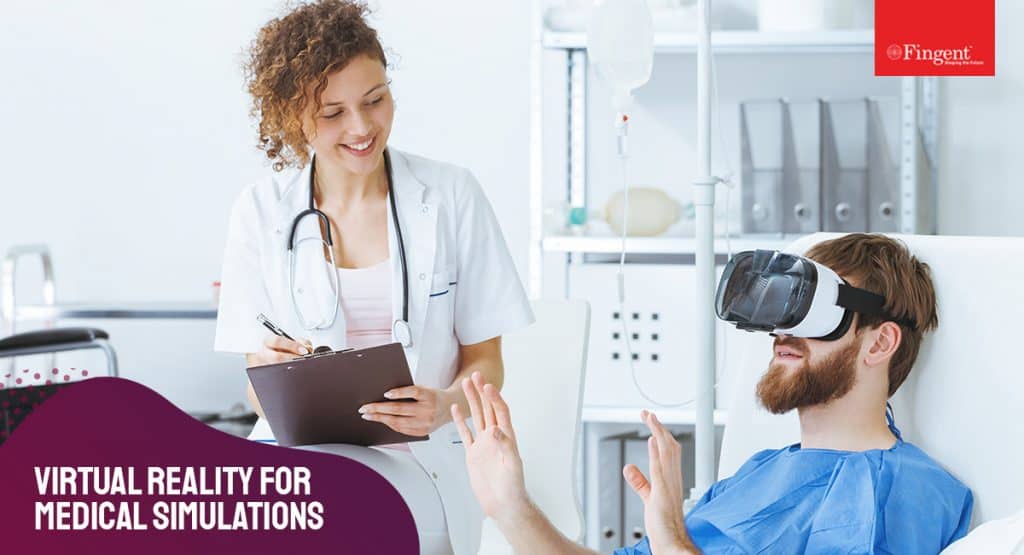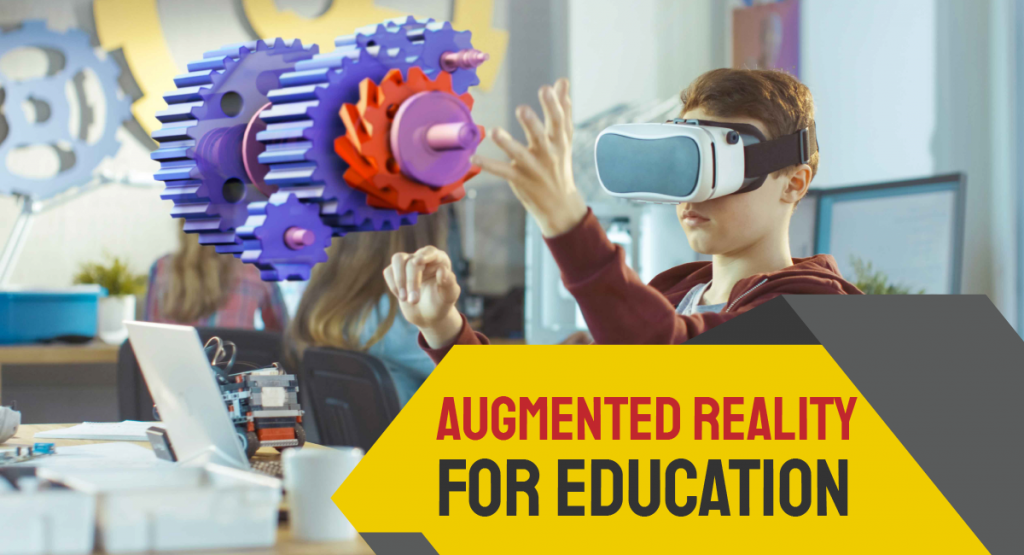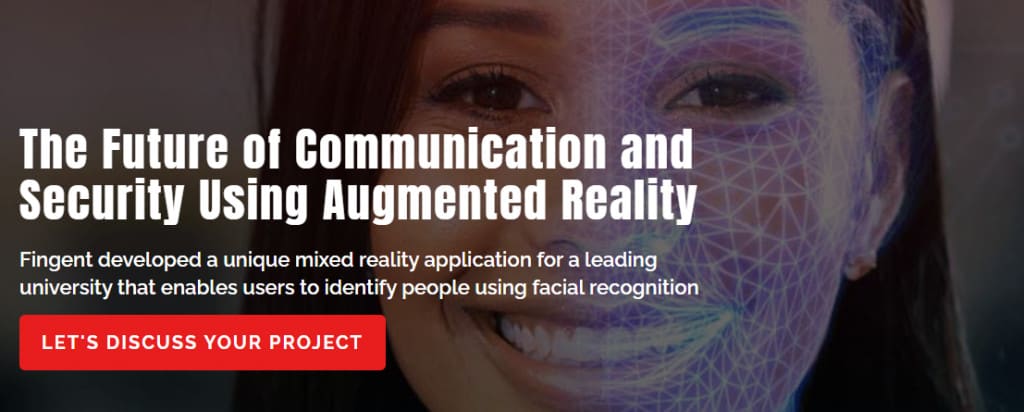Tag: mixed reality
Extended Reality (XR) is not a technological marvel. It’s a force that is reshaping how we interact with the world. This blog will help you discover how XR catalyzes the shifts in customer behavior and market demand. But first, let’s explore what Augmented Reality (AR), Virtual Reality (VR), and Mixed Reality (MR) are.
Join us as we unravel the layers of XR. A fusion that transcends technology and propels us into a realm of possibilities and unique experiences.
Extended Reality (XR): A Fusion of Augmented, Virtual, and Mixed Realities
XR is a versatile umbrella term. It includes a range of immersive technologies. They are changing how we interact with the digital and physical worlds. At its core, XR integrates three primary components: Augmented Reality (AR), Virtual Reality (VR), and Mixed Reality (MR).
- Augmented Reality (AR) – Enhancing Real-world Experiences: AR enriches reality. It overlays digital elements on physical surroundings. This is done through smartphones, smart glasses, or AR headsets.
- Virtual Reality (VR) – Total Immersion in Alternate Realities: VR disconnects users from the physical world. It transports them to synthetic environments using headsets like Oculus Rift or HTC Vive.
- Mixed Reality (MR) – Seamlessly Integrating Real and Digital: MR blends AR and VR, creating a real-time interaction where digital and physical coexist. Devices like Microsoft HoloLens integrate holographic images, bridging the gap between real and virtual realms.
The Evolution of XR: From Novelties to Necessities
Over the years, XR has improved a lot. It has reshaped how we see and interact with the digital world. Initially, XR technologies were perceived as cutting-edge novelties confined to niche applications and experimental projects. But, fast progress and innovation have moved XR into the mainstream. It is widely used in many industries.
One pivotal aspect of this evolution is the distinction between XR and spatial computing. Spatial computing uses spatial mapping and computing to improve interactions in physical spaces. XR covers a broader range of technologies. XR integrates AR, VR, and MR, providing a comprehensive framework for immersive and interactive experiences.
As XR technologies matured, the focus shifted from novelty to practicality. Better hardware, graphics, and advanced sensors made XR apps more realistic and useful. This evolution has facilitated the seamless integration of XR into diverse fields, ranging from healthcare, education, entertainment, and enterprise.
Read More: Augmented Reality in Healthcare
Deliver Revolutionary Customer Experiences with XR Technology
XR: Transforming Customer Behavior and Igniting Business Opportunities
Extended Reality is reshaping customer behaviors and presenting businesses with unprecedented opportunities. The immersive nature of XR technologies has far-reaching effects, as shown below:
1. Enhanced Customer Engagement
XR transforms the customer experience, fostering deeper engagement and interactivity. In retail, for example, AR empowers customers to try products virtually. This reduces uncertainties and bolsters confidence to buy right. This heightened engagement correlates with increased customer satisfaction and loyalty.
2. Personalized Product Experiences
Businesses leverage XR for personalized product interactions. Customers can visualize products in real settings or explore virtual showrooms. This customized approach enriches the shopping process. Businesses can also gain deeper insights into customer preferences.
3. Improved Decision-Making Processes
In the real estate and automotive sectors, XR facilitates decision-making through immersive experiences. Prospective homebuyers can virtually tour properties. Car buyers, meanwhile, can customize and visualize vehicles in intricate detail. This expedites decision-making and enhances the likelihood of successful transactions.
4. Training and Skill Development
XR revolutionizes professional training with VR simulations. Businesses use realistic scenarios to build employee skills. This leads to better performance and lower training costs, making them more efficient.
Medical Simulation Training: XR is used in medical training for simulations. It lets healthcare pros practice surgeries and procedures in a virtual world. This addresses challenges related to limited access to real-life scenarios, enhancing practical skills, and reducing the learning curve.
In industries like manufacturing and construction, XR is used for training. It is for training on complex machinery and equipment. According to a PwC study, using AR/VR devices lets employees train four times faster. This led to a 275% increase in their confidence. AR/VR training emerges as a powerful approach. It substantially minimizes training duration and also helps eliminate training accidents.
5. Opening New Avenues in E-commerce
XR is reshaping e-commerce with AR try-on features and VR-enhanced virtual shopping. This evolution improves online retail, leading to higher conversion and lower returns.
AR Try-Ons in Fashion: E-commerce platforms integrate AR for virtual try-on experiences in the fashion industry. Customers can try on clothing and accessories with their smartphones. This solves challenges related to being unable to try items before buying. This enhances the online shopping experience and reduces return rates.
VR-Enhanced Virtual Shopping: XR technologies, particularly VR, create immersive virtual shopping environments. Customers can explore products in 3D. This addresses challenges from the lack of physical interaction in online shopping. This provides a more engaging and interactive experience, increasing conversion rates.
AR try-on technology in clothing retail boosts Average Order Values (AOVs). It also encourages repeat purchases. According to Threekit, 71% of consumers say they will shop more with AR in their customer journey.
6. Streamlining Product Design and Configuration
XR streamlines processes. These processes are critical for product design in industries like automotive and manufacturing. XR facilitates virtual prototyping in the automotive industry. Designers can create and change 3D vehicle models. This streamlines the design process and addresses challenges related to the cost and time of physical prototyping. It leads to more efficient and cost-effective design changes.
Discover Transformative Business Opportunities & Innovations with Extended Reality
Fingent’s Guide to XR Triumph
Elevate your enterprise to new heights with Fingent’s unparalleled expertise in Extended Reality. Our tailored XR solutions redefine training, customer engagement, and product design processes. We specialize in creating immersive simulations for efficient employee training. Fingent crafts AR/VR apps that enhance customer experiences. We also streamline product design with virtual prototyping and 3D modeling. Seamless integration into existing systems ensures minimal disruption. While continuous support and optimization keep your enterprise at the forefront of innovation. Transform possibilities into reality with Fingent as your strategic XR partner.
Ready to embark on a journey of enhanced success?
Witness the transformative power of XR reshaping your enterprise’s training programs, customer interactions, and product design processes. Let’s redefine success together!
Stay up to date on what's new

Featured Blogs
Stay up to date on
what's new



Talk To Our Experts
“The advance of technology is based on making it fit in so that you don’t really even notice it, so it’s part of everyday life.”
– Bill Gates, Co-founder of Microsoft.
When we look around us today it has become exceedingly obvious that the world is moving at a much faster pace than we remember. If not all, most of the credit goes to the vast number of technological developments that take place almost every day. In this rapidly changing world, we can either choose to evolve with it or stay back and live with the feeling that we are completely out of place and out of our depth.
This blog will help you understand all the “realities” of today’s tech world and help you fit right in and create a future workplace, to move ahead of your competition.
Reality In Its Many Forms
Some of the fastest developing and most exciting branches of technology out there are Virtual Reality and Augmented Reality. Although some companies have already integrated this technology into their business practices to create innovative and sustainable workplaces, it is imperative for every business to invest in AR and VR. If they want to succeed in this overly competitive world that is.
Recent studies conducted by PwC show that VR-trained employees were up to four times more focused than their e-learning peers and four times faster to train. When trainees are taught with a VR experience, they learn more from the training and have superior outcomes. Creating a workplace that is equipped with this kind of technology will most definitely increase the work productivity of the employees.
VR and AR have evolved over the past years and have become more convenient both technologically and financially for business and learning. They affect companies in every industry and various organizations, from universities to social enterprises. They have become the new terminal between humanity and machines, uniting the digital and physical worlds.
Read more: Top AR and VR Trends to Transform Ecommerce in 2022!
Now that we’ve established the necessity of VR and AR for businesses and industries, let’s move on to understanding what exactly these technologies are and what they do.
Virtual Reality
It is an artificial environment created by software and requires a special headset that plunges you into the new reality. It immerses the user within its virtual environment and in most cases, the user can manipulate objects or perform a series of actions.
Augmented Reality
AR, conversely, does not give an absolute immersion. It adds digital elements to a live view usually done by using the camera on a Smartphone or tablet.
Mixed Reality
Mixed Reality blends elements of AR and VR to co-exist creating a combination of virtual and actual realities, allowing you to interact with both simultaneously.
Extended Reality
XR is an umbrella term used when all these computer-generated technologies are used together.
Read more: Augmented Reality, Virtual Reality, Mixed Reality Detailed with Real-life Examples
How do these technologies influence the future of a workplace?
Listed below are a few ways that AR/VR/MR/XR is influencing the future workplace.
Virtual Reality –
- Increased Connection and Collaboration – As opposed to video consultation, VR users feel like they inhabit the same space, resulting in more effective collaboration.
- New HR Practices – With access to employees across the world, hiring practices will widen to recruit top talent.
- Upgraded Training Techniques – VR training is especially favorable in perilous situations, as it offers a safe, engaging, and educational experience.
- Efficient Product Development – VR finds its use in product testing in a variety of scenarios, abolishing the need for costly physical paradigms.
Augmented Reality –
- Will Save Money – AR headsets and apps can replace costly seminars or classes.
- Improve Productivity – Increased engagement through collaborations with other companies using AR will change the way employees work.
- Cognitive Barriers – With the help of AR your workforce can train much faster. This will in turn lead to a more structured, competent, and productive team.
Mixed Reality –
- Better business operations – MR can help companies work efficiently by allowing engineers to try new ideas without wasting resources and reducing complex processes.
- Enhanced training – It can offer experiential training sessions which allow team members to experience a situation for themselves, in a simulated environment.
- Improved creativity – It improves project development by allowing teams to make important decisions and alter features without wastage or excessive resources.
Extended Reality –
- Investment Banking – By using XR for broadcast, a firm could reach and interact with many investors over multiple locations in a robust and dynamic way while reducing costs, logistical challenges, and the need for travel.
- Trading Floor – XR replicates all the benefits of a modern trading floor along with advanced capabilities, plus the ability to access the trading environment from anywhere in the world
- Training and Compliance – Scenario models powered by XR, could be used to provide real-time training and ensure employees are well-equipped for real-world situations.
Read more:5 Real-world Applications of Extended Reality
Identifying Which Ecosystem Best Suits VR/AR/MR/XR
To determine which of these technologies better suit your ecosystem, evaluate the challenges your workplace is experiencing.
VR and AR thrive in fields of research and development, design, review, education, and training. MR’s combination of the physical world and the digital world is making notable changes in various industries, including medical, education and research, manufacturing, design, and construction. XR being the comprehensive umbrella that it is plays a more prominent role in various sectors and organizations, yielding clear benefits in numerous facets of work and business, including training, collaborative working, and marketing.
Irrespective of the technology you decide to go with, remember that every time new technology is implemented there’s a clear culture shift at the workplace, so be prepared for change.
Read more: How Is Extended Reality (XR) Impacting Customer Behavior
How To Affordably Deploy AR/VR/MR/XR With Fingent
Fingent has developed strategic software solutions for businesses across the world. By initiating your projects with Fingent you are backed up by a dedicated and skilled team who work round the clock. All our processes are customer-oriented and designed to reduce the cost of business developments. Cutting-edge cloud to manage your storage, servers, and user access from one place. Set up everything fast with zero coding.
Fingent merges Augmented Reality using 3D modeling, 360-degree imaging, real-time character identification, and orientation-based tracking with our reality to form immersive and personalized solutions. We help you utilize ARCore; Google’s AR platform, to fabricate a potent user experience through Android devices and ARKit for IOS devices.
With 3D models and simple user-friendly interactions, Fingent creates a customized Virtual Reality strategy that closely binds with your business structure and objectives. We help you analyze and grasp the growing abilities of Mixed Reality to reach your customer base in the most ingenious ways and since Extended Reality is becoming the new mode of communication between business and client, Fingent has systems in place to increase awareness, engagement, and conversation and help support large-scale communication.
If you’re looking for easy and affordable ways to make your workplace future-ready, this is your shot Fingent has got you covered. Give us a call.
Streamline your business IT with InfinCE
Stay up to date on what's new

Featured Blogs
Stay up to date on
what's new



Talk To Our Experts
- Introduction
- A Brief History Of Metaverse
- A Simple Definition Of Metaverse
- Metaverse And The Future Of Work
- Metaverse Applications In Our Work World
- Potential Concerns Around Metaverse
- Metaverse: What Lies Ahead?
Introduction
Metaverse is the next generation of the internet. Blending the elements of virtual reality, augmented reality, online games, social media, and cryptocurrencies; metaverse ushers in a novel phase of interconnected virtual experience, that reimagines the future of work. This blog will take you through everything you need to know about Metaverse – from history to how it will impact the future of work!
A Brief History Of Metaverse
In his 1992 sci-fi novel Snow Crash, author Neal Stephenson coined the phrase metaverse – probably the first time most of us heard it. The novel portrayed metaverse as a successor to the internet, depicting the author’s vision of how a virtual reality-based Internet might evolve in the immediate future.
Today, the metaverse is moving from hypothetical to real, inspiring enterprise tycoons to rebrand and innovate. The recent rebranding of Facebook, Inc. into Meta Platforms, Inc. was solely inspired by metaverse. In the Founder’s Letter, Mark Zuckerberg underscores that “We are at the beginning of the next chapter for the internet. The next platform will be even more immersive — an embodied internet where you’re in the experience, not just looking at it. We call this the metaverse, and it will touch every product we build.”
Ever since the publication of Snow Crash, the notion of metaverse has enjoyed constant popularity. The concept has highly inspired the creators of online virtual worlds such as Second Life and Active Worlds. The success of Snow Crash was such that it was made a mandatory read for Microsoft’s Xbox development team.
Until recently, the application of metaverse was restricted to internet-based video games and social media. Metaverse was predominantly used to improve the quality of immersion in virtual reality environments. The past two years witnessed a tremendous shift in the work culture, with remote and hybrid workspaces becoming the new normal. The application of metaverse technology in improving work productivity, creating interactive learning environments, and facilitating virtual reality home tours is on the brink and companies like Fingent are already on the track with best-in-class POCs and ace development skills.
Read more: What’s in Store for Real Estate this 2022?
A Simple Definition Of Metaverse
Metaverse is coined by joining two words; “meta” meaning beyond and “verse” referring to the universe. Literally, metaverse stands for a virtual world that lies on top of, or beyond the physical world. Metaverse is an extension of the real world that is amplified by emerging technologies such as extended reality (a combination of VR, AR, and MR), non-fungible tokens (NFTs), cryptocurrencies, AI, IoT, and more.
Metaverse And The Future Of Work
When the COVID-19 pandemic swept industries and stomped economies, the internet, and other work-from-home technologies helped us stay resilient and ensure business continuity. Many industries became technology-intensive, such as education, retail, conferencing & event management, etc. Metaverse will further transform these sectors by implementing virtual reality (VR) based wearables that allow users to experience and/or purchase the services with the help of immersive virtualization (without leaving the premises of their homes).
Imagine you want to go for a movie with a colleague after working hours or hang out with a friend for dinner. With metaverse, you’ll have alternatives for all these social interactions, especially when you want to avoid the hassles of a physical word, such as social distancing.
Metaverse will significantly transform the way we work by leveraging VR:
- Offers multiple choices with respect to work location and ways of working. Employees will no longer be confined to their workstation cubicles.
- Metaverse helps build a centralized digital work environment that will smoothen the transition to remote working.
- Freedom from tedious daily commutes, in-person meetings, expensive business trips, and professional office apparel.
- Guarantees physical safety from getting exposed to harmful viruses like COVID-19 or Omicron. Virtual collaboration reduces the spread of transmittable illnesses.
- Makes idea-sharing and collaboration more effective and accessible than ever. Easy to join virtual meetings and participate actively in discussions by gaining a near-physical experience.
- Eliminates the risks and hazards present in the physical world and makes the workspace safe and convenient for employees.
Case Study: How Fingent enabled a leading educational establishment to innovate their campus visits by leveraging virtual reality. Download now!
Metaverse in real-life: Two leading examples
One of the best examples to demonstrate the impact of metaverse on the future of work is the recently launched Horizon Workrooms. Introduced by Facebook, Horizon Workrooms is a virtual meeting space that allows you to collaborate with your coworkers virtually without feeling isolated or deprived of workplace interactions during remote work. The underlying virtual reality technology will help you join meetings as an avatar or dial into the virtual room using your computer through video call. Powered by VR and delivered via the Oculus Store, the Horizon Workrooms aims to leverage VR as a new computing platform that will reimagine the future of work.
Another notable example of the metaverse in a workplace is the latest Microsoft Mesh app. Mesh leverages a mixed reality experience that allows you to connect, share, and collaborate with your coworkers in immersive, near-natural virtual environments. Using Mesh, you can create AI-enabled 3D avatars that enable you to join meetings, visualize and annotate content, and use 3D objects to explain and point out features. The purpose is to make users feel like they are physically present in the meeting room. Currently, Mesh-enabled experiences are available for HoloLens and AltspaceVR users.
Metaverse Applications In Our Work World
In no time, the COVID-19 pandemic forced corporate employees and industries to shift from physical to virtual. Platforms like Zoom and Slack facilitated remote collaborations far and wide, and across different time zones. Organizations are discovering the new and improved possibilities offered by virtual collaboration tools, making metaverse an inevitable technology in the future of work.
Case Study: Fingent develops a unique mixed reality application for a leading university by combining facial recognition technology. Read more.
Top three industry applications of metaverse:
1. Real estate: In 2020, Upland.me, the leading blockchain-based metaverse tagged to real-world addresses sold a virtual property of the New York Stock Exchange (NYSE) for a mammoth 23,000,000 UPX (US$ 23,000) in their year-end auction. While Upland’s target was to sell the virtual property at a premium of 65%, the deal secured them a massive premium of 368%.
Real estate brokerage firms and property trading companies can leverage metaverse to combine physical and virtual worlds, allowing users to buy, sell, and trade simulated properties that are mapped to real addresses. The application of blockchain-based cryptocurrencies will ensure the safety of transactions and the true possession of digital assets in the world of the metaverse.
2. Commerce: Fashion brand Gucci’s digital-only Dionysus bag was sold at a higher price than its physical version during an auction on Roblox- the leading video game platform. While the bag’s physical retail value was $3,400, it commanded a virtual resale price of $4,115, despite its non-transferability outside the Roblox environment.
Metaverse will offer consumers a more interactive in-store experience that allows them to try new products and explore novel brands using AR and VR sets. It’s a step ahead of the current e-commerce applications that will give way to 3D virtual shopping powered by metaverse.
Read more: Extended Reality: Six ways it is improving customer experience and helping brands grow
3. Education: A recent study reveals that around 91% of the world’s student population have experienced educational disruptions over the past two years. While emerging technologies accelerated the transition to online education, the academic world is still in a constant chase for immersive, inclusive, and interactive learning technology that can improve the educational ecosystem.
Education is a key focus area of the metaverse. Facebook recently announced that it will partner with Coursera and edX to develop a versatile AR curriculum. In the 2021 ASU GSV Summit, the Arizona State University exhibited a VR classroom that allows students to virtually explore a sanctuary of endangered species, which aroused the curiosity of the participants. Subjects like astrophysics, biology, surgery procedures, anthropology, etc. can be taught more effectively by leveraging metaverse.
Read more: How virtual reality improves the standard of medical education and training
Potential Concerns Around Metaverse
Statista reports that an average of 34 million units of VR headsets would be sold by 2024. As industries increasingly embrace VR to meet both enterprise and consumer demands, the universal adoption of full-fledged metaverse applications doesn’t seem fair. However, we still need to overcome a few challenges that slow down metaverse adoption.
- New verification methods should be developed to solve identity theft and reputation loss in the metaverse. This is important to prevent crimes such as facial forging, footage and voice tampering, etc.
- Any online environment isn’t devoid of data and privacy concerns. It’s vital to improve data security and privacy protection methods to keep your data safe in the metaverse world.
- Robust digital currency and payment systems should be developed to ensure the security of transactions in the metaverse virtual marketplace. To ensure safe trading within metaverse, built-in transaction verification systems should be implemented.
- As metaverse is expected to bring more people from different countries together in a virtual collaborative space, it’s important for lawmakers to devise the legislation that governs virtual interactions. Countries need to focus on setting up virtual legal domains and making the digital space safe for users.
- Upgrading the application of metaverse from the realms of gaming, fun, and entertainment to the domains of learning, corporate work, and industries requires careful planning. The progression should be correlated with both the business outcome as well as the demands of customers and employees.
Read more: Reality technology services offered by Fingent
Metaverse: What Lies Ahead?
Though metaverse is advancing to take us to the threshold of a virtual universe, the technology is still at a nascent stage. As more tech giants and startups join the bandwagon, we can expect that metaverse will combine the best of reality technologies like AR, VR, and MR to transform the future of work. John Riccitiello, the CEO of Unity Technologies (developer of Unity game engine) observes that by 2030, Virtual Reality headsets will be as common as today’s gaming consoles.
Amidst the challenges that choke businesses during the pandemic, promising experiments around metaverse prove that remote work is a huge problem that VR could resolve. Industries that were hitherto dependent on on-site and field activities are taking a different path by embracing VR. We can expect that metaverse will soon be the efficiency driver in the new normal of work. If you have any queries on metaverse or need a demo on how VR can help you do business better, write to us.
Experience Next-level Collaboration
Collaborate with your teams like never before using a pool of ready-to-use collaboration apps integrated with InfinCE.
Explore InfinCEStay up to date on what's new

Featured Blogs
Stay up to date on
what's new



Talk To Our Experts
Extended Reality (XR), is an umbrella term that encompasses immersive technologies – AR, VR, and MR that merge the physical and virtual worlds. While XR technologies are still widely used for gaming, social media and entertainment, it is being implemented extensively in industries and supplementing humans in unimaginable ways. Experts believe that the XR market will grow from 33.0 billion dollars in 2021 to 125.2 billion dollars by 2026, at a CAGR of 30.6%. This blog will take you through the top 6 reasons why your business needs to implement the rising capabilities of Extended Reality!
What is Extended Reality?
When put simply, XR is reality tech that covers VR, AR, and MR to extend reality by merging the real and virtual worlds. Here’s a quick look at what VR, AR, and MR are!
- Augmented Reality(AR): AR connects the physical environment with the virtual world through tablets, smartphones, smart lenses, and AR glasses to augment real-life scenarios.
- Virtual Reality (VR): This technology merges the physical environment with the digital one to create a whole new virtual world. Virtual Reality headsets and head-mounted displays help provide immersive experiences of the digital world.
- Mixed Reality(MR): With the help of MR headsets, mixed reality brings together the virtual and the physical environments to deliver unique experiences.
The term Extended Reality first popped up in the 1960s, when Charles Wyckoff filed a patent for his silver-halide XR film. The film was intended for photographing bright light events such as nuclear explosions. More recently, XR has moved into the mainstream with a few enterprises leveraging it to launch applications aimed at extending the customer experience.
Read more: Augmented Reality, Virtual Reality, and Mixed Reality Detailed with Real-life Examples
Industries Transformed by Extended Reality
AR, VR, and MR are developing at a rapid rate and transforming the way businesses are operating, communicating, and collaborating. Here are some of the business industries that have undergone a drastic change with these technologies.
- Marketing and advertising
- Healthcare
- Education and training
- Manufacturing and engineering
- Real estate
- Retail
- Gaming
- Art
XR offers endless possibilities and so any field can benefit by leveraging XR into their business processes.
Reasons Why You Need to Leverage XR Technologies for Your Business
1. Cultivates brand awareness
With changing customer demands and fierce competition, it is getting difficult to attract potential customers. Simply launching new products and services is not enough if you want to grow your business.
XR technology helps deliver a unique experience for users, foster consumer loyalty, and build brand awareness. For example, Gucci offers AR-fueled apparel and accessories try-on app that encourages users to try their accessories before buying thereby providing a stand-alone experience for users.
XR technology not only helps capture the attention of your customers but also promotes a positive experience with the brand.
2. Better customer experience
Customer experience is important for the success of any marketing strategy. XR’s ability to deliver immersive experiences will help you connect with your customers better and establish deeper emotional connections. XR helps transport your customers to different places and even attend live events without leaving the comfort of their homes.
L’Oreal leveraged AR technology to help their customers ‘try’ skincare products before buying and saw its conversion rate triple.
Read more: How Is Extended Reality (XR) Impacting Customer Behavior
3. Increases customer engagement
As per a report by Deloitte, 90% of the companies are implementing AR and VR technology in their business. Another report reveals that 40% of customers are willing to pay more if they can experience it through Augmented Reality technology. Yet another report reveals that 58% of customers are more likely to buy a product if they have tried it out.
These statistics suggest that extended reality technology must be implemented in your business if you want to grow. XR allows customers to get detailed information and visualization about the products and services. It enables them to try out various products in various combinations and even test patterns and colors before purchasing them.
With XR technology, brands can increase engagement rate significantly and attract more customers and also provide them with a positive experience.
Read more: Augmented Reality Vs Virtual Reality – The Future Technology
4. Offers convenience
There’s no denying that online shopping is convenient and now with the pandemic forcing people to stay indoors most of the time, it is only becoming more popular. XR helps brands improve the shopping experience and also makes it less time-consuming. It helps consumers find what they are looking for faster and eliminate uncertainty from purchase decisions.
IKEA, for example, allows consumers to use their Place app and place a piece of furniture in their home using their phone. This improves the level of convenience, delivers a better customer experience, and eliminates any uncertainty before purchase.
5. Smarter Libraries
Data is the key to thrive today’s digital era. XR technologies place data in the context such that users can get better results.
For instance, you can use smart glasses to get a visual walkthrough to understand the true impact of the data collected instead of poring through spreadsheets and dashboard metrics for hours. XR technologies can help you make better and informed business decisions.
6. Create positive associations
Extended Reality provides brands with endless opportunities to create and implement emotional campaigns for their products. Based on the visual cues you include in your brand campaigns, you could encourage consumers to conclude your brand’s qualities.
XR helps connect with your audience in a way that activates their emotions and thus helps build a positive brand association. This will ensure consumers prefer your brand over others and establish loyalty. North Face, for example, launched an immersive VR experience of the Nepal landscape to its customers to identify with the brand’s identity.
Read more: Accelerating AR/VR Adoption Among Customers
Takeaway
Today, customers expect an intuitive experience from their brands and XR is becoming the new form of a conversation between brands and customers. Using immersive technologies, enterprises can nurture a culture of digital transformation and increase efficiency and profitability in the digital space.
Driven by immersive technologies, we at Fingent top software development company, can help your brand increase awareness, engagement, and conversion. We have systems in place to help support large-scale communication. If you have a project in mind, we can help convert it to reality. Call us today!
Stay up to date on what's new

Featured Blogs
Stay up to date on
what's new



Talk To Our Experts
How Various Industries are Leveraging AR, VR, and MR Today?
Augmented Reality (AR), Virtual Reality(VR), and Mixed Reality (MR) may sound the same to many of us. But do you know that each one is different? AR, VR, and MR are different tech concepts with characteristics that differentiate each from one another.
Here’s what you need to know about each of the technologies, along with a few examples.
Augmented Reality
Augmented Reality uses computer vision along with mapping and depth tracking to show the appropriate content to the user. This functionality allows the cameras to collect, send and process the data to show the appropriate content to the user.
AR is designed for unrestricted movement while projecting images or other objects that you are looking at and enhances the user’s physical environment with contextually relevant digital content in real-time. A user can experience Augmented Reality with a smartphone or special hardware.
Watch Video: Augmented Reality in Education Transforms Learning Experience
Some of the interesting real-world examples of AR
1. AR in Gaming
Games like “Pokemon Go” project a Pokemon on your screen, on top of whatever your mobile camera focuses on. Augmented Reality has beautifully combined the real world with the favorite Pokemon characters.
2. AR in Medical Training
Augmented Reality is finding its virtue in medical training today. For example, students at the Cleveland Clinic, Case Western Reserve University are learning human anatomy using AR headsets or glasses. AR allows them to examine the human body without the need for dissecting cadavers or watching live operations.
Read more: How Augmented Reality in Healthcare is set to Transform the Industry in Future
3. AR in Retail
The retail sector also has been taking advantage of AR to help customers have a more enjoyable and interactive shopping experience. For example, Harley Davidson has developed a unique mobile app for its customers that allows them to view a motorcycle in-store using AR and customize it by adding accessories, changing paint jobs, etc.
IKEA, the leading retail conglomerate, has rolled out AR-powered retail apps that allow customers to “try on” clothing remotely before buying them online.
Read more: How Top Brands Embrace Augmented Reality to Offer Immersive Customer Experiences
4. AR in Manufacturing
Augmented Reality enables the manufacturing industry to gain a competitive edge by helping companies improve quality and productivity. Workers can get assistance from AR gadgets to save time, reduce errors and increase efficiency. Some of the world’s biggest brands like Boeing and General Electric are already using AR in their manufacturing processes.
Using AR glasses allows Boeing’s technicians to easily view the wiring renderings in the aircraft fuselage without external distractions.
Augmented Reality enables GE mechanics to be more productive as the technology offers them step-by-step instructions and visuals directly within their line of sight. They also get alerts in real-time through AR smart glasses so that they can inspect every step before moving on.
Read more: How Augmented Reality Simplifies Equipment Maintenance
Virtual Reality
Virtual Reality Environments (VREs) allow users to experience real-life scenarios via simulated counterparts and gain practical knowledge that would otherwise be difficult to comprehend in a real environment.
As the main focus of Virtual Reality is on simulating the vision, you will have to wear a VR headset such as Oculus Quest or HTC Vive Cosmos in front of your eyes that eliminates any interaction with the natural world (avoids distractions). Typically, two autofocus lenses are placed between the screen and the user’s eyes. The lenses adjust based on the individual eye movement and positioning. To render the visuals on the screen, you can use an HDMI cable connected to the PC or mobile phone.
Virtual Reality uses speakers, goggles, and even handheld wearables to simulate a real-world experience. You can also employ visual, audio, and touch simulation to create a more immersive reality.
A few real-life applications of VR
1. VR in Education
Virtual Reality can make learning more engaging and immersive. In addition to schools and universities, virtual experiences can help businesses train their staff. Currently, Unimersiv is offering VR educational content for institutions and companies.
Case Study: Using 360-degree VR simulations, the University of North Carolina offers an immersive campus touring experience to aspiring students. Download now!
2. VR in Real Estate
For years, real estate agents have used photos and graphic designs to showcase properties to prospective buyers. Today, Virtual Reality has transformed real estate property tours, making them more personalized, immersive, and close to reality. Being an immersive technology, VR enables potential buyers to experience a 3D walkthrough and understand better what each property has to offer even before scheduling a physical site visit.
For example, Sotheby’s, one of the world’s leading luxury realty brands, offers Virtual Reality home tours and videos to its clients. Potential buyers can view properties and spaces from the comfort of their homes using a web browser, or a smartphone, PC, laptop, or through a wearable headset.
Read more:How Virtual Reality can Transform Your Real Estate Business
3. VR in Marketing
VR is helping businesses reach out to their audiences by launching immersive and engaging marketing campaigns. With the COVID-19 pandemic compelling people to shop online and companies to transform digitally, Virtual Reality is gaining more popularity as it is helping people get a feel for products without leaving their homes.
For example, IKEA has introduced a VR app that enables users to experience kitchen remodeling. Using the VR Kitchen app, you can explore the virtual kitchen and interact with the objects using a VR headset.
4. VR in Healthcare
Virtual Reality helps doctors understand their patients’ needs better as it provides an in-depth look into human anatomy. Today, VR is extensively used in surgical training.
An educational project conducted by the University of New England (UNE) successfully used VR to teach empathy to medical and health profession students. The project used a VR tool called “Alfred Lab app” – to teach students about macular degeneration and hearing loss from a 74-year-old African American man’s perspective. Realizing an aged and ailing patient’s thoughts and concerns enables the residents to develop empathy towards such patients.
Read more: How Virtual Reality Improves the Standard of Medical Education and Training
5. VR in Travel and Hospitality
The travel industry is facing the hardest time ever in its history. However, vaccination rollouts on a global scale and international travel relaxations now give a fillip to travel, tourism, and hospitality. An early adopter of digitalization, the travel industry has already forayed into Virtual Reality. Travel businesses attract tourists and even promote holiday destinations through virtual staging and tours. Virtual Reality also allows people to explore the world virtually, especially those who cannot afford to travel.
Google StreetView is one of the best examples of how VR is being used in the travel industry. In addition to viewing panoramic images on a computer, it allows users to enable Google Cardboard mode for a Virtual Reality experience.
Mixed Reality
Mixed Reality, sometimes known as hybrid reality, combines the elements of both AR as well as VR. However, here the virtual content is not only overlaid on the actual environment but is fixed to and interacts with that environment. In simple terms, Mixed Reality lets you see virtual objects just like Augmented Reality, but these objects are capable of interacting with the real world. In simple words, Mixed Reality is more like immersive and interactive Augmented Reality.
MR is still in its nascent stages and may take time to create an impact like the other two technologies. One of the most remarkable Mixed Reality apparatuses is Microsoft’s HoloLens.
Opportunities provided by Mixed Reality
1. MR in Education
Mixed Reality allows students to see both the real world as well as the holograms. MR offers an immersive learning environment enabling students to understand better.
Case Study: Find how Fingent developed a unique Mixed Reality application for a leading university that enables users to identify people using facial recognition. Download Now!
2. MR in Manufacturing
Mixed Reality provides workers with real-time assistance, thereby facilitating manufacturing processes. The technology allows workers to see holographic instructions, so they know what to do. This minimizes human errors and improves quality significantly. Mixed Reality is also helpful for repairs and maintenance, especially in industries that require precision and expertise.
For example, Renault Trucks integrates Mixed Reality into its manufacturing process for enhancing engine quality control at one of its factories.
The blurring line between physical and virtual
While Virtual Reality takes you to the virtual world from wherever you are, Augmented Reality adds to the reality by projecting information on top of what you see. Mixed Reality combines both AR and VR. All these technologies, though powerful, are yet to make their mark with consumers. That said, they can completely change the way we use computing devices, gadgets, and technology in the future.
If you are eager to offer your customers immersive virtual experiences that surpass physical encounters, look no further than Fingent, a top custom software development company. Get in touch with us now!
Stay up to date on what's new

Featured Blogs
Stay up to date on
what's new



Talk To Our Experts
How AR and VR augment employee safety training programs in industries
Employee Safety has taken on a new meaning as the world totters and tries to wrap its head around COVID-19. The pandemic spared no prisoners as it touched every aspect of our life, including our work and our businesses. It has changed the way people work and accomplish their jobs and altered the way employers look at employee safety training.
For starters, traditional employee safety training usually takes one of two forms: on-the-job and classroom learning, which might be a problem at this time. Fortunately, the latest training methods that feature immersive technologies such as Augmented Reality (AR) and Virtual Reality (VR) demonstrate their ability to close the current gaps in employee safety training. This blog discusses the impact AR/VR has on employee safety training. Before we discuss that, it is crucial to understand why businesses require augmented and virtual realities now.
Read more: How Augmented Reality Can Simplify Equipment Maintenance
The increasing significance of AR and VR in employee safety training
Adapting to the new normal, most employees will continue to work from home. Others will face new measures and procedures when they return to workplaces. It can pose a challenge to employers as they struggle to find new methods to train new employees while following physical constraints like social distancing.
Before we look at the solution, let’s have a look at a few drawbacks of the traditional classroom training:
Drawbacks of the conventional classroom training
– Ineffective training procedures
Usually, safety procedures are taught with a combination of computer testing and classroom exercises. These methods do not allow repetition training. It is good but not good enough because it lacks effectiveness and does not encourage knowledge retention. Besides, social distancing norms make it difficult to arrange for classroom training.
– Doesn’t engage employees
As traditional learning techniques are not imparted in a realistic environment, they do not simulate the hands-on experience in scenarios that are tough to be recreated. Classroom learning is often not a useful or engaging teaching style for workers who are in highly mechanical roles. With such training, employers cannot risk a technician to perform their jobs effectively and safely on day one.
– Classroom trainings are expensive
According to the 2019 training industry report, on average, companies spent 1,286 dollars in 2019. The same report also mentions that, on average, employees received 42.1 hours of training. It proves that traditional training methods and materials are a significant expense for financials and lost work time. Employers must look for newer ways to train their employees. Thankfully, AR and VR technologies help support employee safety training.
Read more: How Augmented Reality Is All Set to Transform the Workplace
Top 7 ways AR and VR impact employee safety training
Workplace injuries cost businesses more than 59 billion dollars per year. However, companies cannot cut back on employee safety training under any circumstances. In professions where inadequate safety procedures are a huge risk to the employee, employers must ensure that safety training is practical and accessible.
1. No more trial and error
Specific jobs, such as working in power plants or manufacturing units, require that employees be trained before assuming full responsibility. Augmented and virtual reality help make simulations that allow for training that is safe and free of consequences. Employers can create an exact simulation of their operations and enable new employees to practice repeatedly. Such training allows them to see and correct their mistakes before they start using the actual equipment.
2. Risk-free immersive training
AR and VR technologies allow instructional designers, animation engines, and game designers to combine fun with practical learning. It raises levels of engagement in trainees. Besides attractive and fun components, AR and VR appeal to learners because of the risk-free training element. It eliminates the need for employees and trainees to be in the same location during the training session.
3. Increased retention and skill acquisition
Practice is the best way employees can sharpen their skills. It is a well-known fact that we retain much more information when we combine learning with “doing.” Compared to discussions, reading, lectures, or even audio-visual learning, hands-on-practice is the best way to retain information. AR and VR technologies allow for such training that increases knowledge retention and skill acquisition. These technologies enable employees to practice the concepts they have learned immediately.
4. Allows self-paced learning
Each employee is different with varying levels of learning abilities. AR and VR allow each person to learn at their own pace. It means they can work on the same concept multiple times without the risk of injury to themselves or the machinery. This risk-free approach allows for self-paced learning and the ability to take the training until they master a particular concept.
5. Enhance the effectiveness of learning
Most employers have deemed it unsafe for their workers to share headsets to receive safety training in the current situation. Augmented and virtual reality allows employers to develop solutions where an employee can point his phone camera to a portion of the training manual that opens up additional materials or resources on his screen. This technique allows companies to train their employees about specific products, solutions, or services.
Read more: Impact Of Augmented Reality In Education Industry
6. Prepare employees for emergencies
Augmented and virtual reality are ideal for training employees to handle real-life situations. This technology is apt for safety training. It can minimize damage to the equipment and the cost of training. AR and VR allow firms to train employees to handle emergencies or real-time threats such as controlling a shooting situation.
7. Easy to customize training
Each organization and its requirements are different. Employees may encounter unique challenges and problems because of location, weather, or just the project’s complexity. AR and VR provide a considerable advantage in terms of flexibility and costs to offer company-specific training. It can accommodate a more tailored training experience.
The future of AR and VR in employee safety training
The safety risk is a real challenge that all industries face. Whether it is theft or operating potentially dangerous machinery, employees face risks, including physical hazards. Besides, the pandemic has necessitated a transition to a new way of life. There is currently a desperate need for new solutions that allow businesses to continue with some semblance of normalcy. AR and VR technologies provide organizations effective ways to train their employees while still preserving physical distancing norms. The use of augmented and virtual reality in employee safety training will become the new normal!
Want to explore how you can start with Augmented Reality and Virtual Reality technologies? Talk to us right away.
Stay up to date on what's new

Featured Blogs
Stay up to date on
what's new



Talk To Our Experts
How we can expedite customers’ move to emerging tech like AR & VR
Many real-world scenarios have shown us the need to keep up with technology. The COVID-19 pandemic, for example, has proved to be an unanticipated catalyst in accelerating customers’ move to the new and emerging technologies and tools. As millions of consumers go into lockdown, they are forced to work from home that impacts their day to day habits of digital connectivity.
Though COVID-19 has created a major drag on the world economy, it is playing an active role in accelerating the development and commercialization of several emerging technologies such as Augmented Reality (AR) and Virtual Reality (VR). This is especially true for innovations that automate processes, reduce human-to-human contact, and increase productivity during social distancing. This article examines how new technologies such as AR/VR can influence various industries.
Wholehearted Support for Virtual Health Care
In a survey conducted by Perkins Coie LLP, a vast majority of the respondents found healthcare and medical devices as one of the top potential growth areas for AR and VR technologies.
Telemedicine had previously not received enough support from healthcare providers, financers, and patients. But now, the need for virtual healthcare advice is accelerating the adoption of telemedicine. Various countries have authorized their healthcare professionals to expand telehealth consultations to make it easier for patients to speak with their healthcare providers.
This pandemic is also spurring the interest in asynchronous healthcare, a form of telemedicine that eliminates the need for face-to-face appointments in managing and monitoring chronic health conditions. New technologies in AR/VR allows a healthcare provider to remotely assess and diagnose a patient in an ambulance two miles away.
Related Reading: Is Mixed Reality the Future of the Healthcare Industry?
Promising future for the Real Estate Industry
Though the present scenario has stirred unrest in certain industries, the real estate sector need not come to a standstill at this time. The use of AR/VR technologies can facilitate communication and collaboration within the industry. As a useful tool for design communication, AR/VR has the ability to ensure virtual co-location of the teams making it possible to transfer messages and work cultures.
The new tech line (AR and VR) allows all project stakeholders to take a ‘walk’ inside the project before it is built. Such an understanding of project data can reduce errors, facilitate faster and better decision-making, and achieve greater business and profitability. In this period when physical mock-ups and on-site prototyping are no longer viable, VR-enabled online libraries can add accuracy to design projects without additional cost.
Related Reading: Augmented Reality & Virtual Reality: Transforming The Real Estate Industry
Use Chatbots Instead of Human Punching Bags
The COVID-19 pandemic has induced changes in customer behavior and business models, which might persist well after the crisis abates. Meanwhile, chatbots can be used to reduce the surge in customer frustration. Various websites are using chatbots to answer general FAQs asked by the customers providing them a better customer experience.
AI-powered chatbots can communicate with humans in real-time. Such personalized chatbots can be developed for your websites, social media profiles, and SMS services to generate automated responses using pre-defined keywords and categories. COVID-19 has complicated the role of the customer service representative. They have to lead the delicate dance of balancing policy and empathy with frustrated customers.
Read our case study: Using Chatbots to Create an Enhanced and Engaging Learning Experience
Chatbots provide proactive customer service and help protect the emotional well-being of the agents. Onboarding and training new customer service representatives are not viable options when the work volume increases. Chatbots allow you to scale-up teams and multiply output within seconds. Additionally, now chatbots can be used effectively to sell products directly to users via WhatsApp (WhatsApp for Business).
Powerful Cutting-Edge Technology: Face-Recognition
In the span of a few weeks, COVID-19 has reshaped how the world works. This new paradigm has opened the door to the deployment of latest technologies such as facial recognition. During this period of social distancing, business and government agencies are increasingly turning to facial recognition technology. Also, face recognition payments are growing in popularity.
Read our case study: The Future of Communication and Security Using Augmented Reality
Grand View Research, Inc. forecasts that by 2027, the worldwide facial recognition market will increase at a CAGR of 14.5 percent to reach 9.93 billion dollars.
Face recognition is already getting a lot of momentum since it avoids touching surfaces and potential infection. Another benefit to face recognition is that it can enable thermal scanning to check body temperatures, minimizing the risk of the sick infecting other workers.
The Race To Keep Pace
Today the globalized economy is in fierce competition. Technology helps increase efficiency across industries especially during this pandemic. That is why AR/VR is emerging as a critical solution. From accelerating user collaboration to streamlining processes, the use cases of AR/VR technologies in business will only get stronger. And as IT infrastructure increases in complexity, these new technologies will deliver multiple benefits to businesses as a whole.
Fingent top custom software development company, helps accelerate your move to new and emerging technologies such as Augmented Reality, Virtual Reality, and Mixed Reality. Get in touch with us to find out how we help our clients deliver a compelling reality experience using these technologies.
Stay up to date on what's new

Featured Blogs
Stay up to date on
what's new



Talk To Our Experts
How Extended Reality Is Transforming Business Environments?
Picture yourself diving into crystal-clear Grecian waters or taking a walk on the moon, all the while sitting in the comfort of your home. As fantastical as this may seem now, Extended Reality is making this possible as we speak. What is Extended reality and what are its powerful real-world applications? Let’s check.
Understanding What Extended Reality Is
Extended Reality is a blanket term that encompasses all virtual and real environments generated by computer technology. This includes components such as Virtual Reality, Augmented Reality, and Mixed Reality. Extended Reality is poised to completely revamp the way businesses interact with the media and has the potential to allow seamless interaction between the real and virtual worlds allowing its users to have a completely immersive experience.
Three Remarkable Components of Extended Reality
These components fall under the category of immersive technologies that can affect our perceptions. Here is a little bit about them:
Virtual reality: Virtual reality transposes its users to a different setting through a simulated digital experience. It makes use of a head-mounted display (HMD) to create an immersive experience by simulating as many experiences as possible. Virtual reality app development has witnessed significant adoption in industries like healthcare and real estate.
Augmented reality: Augmented reality services have emerged as a powerful tool in various industries, including healthcare and real estate. With the development of augmented reality apps, businesses can enhance user experiences by overlaying digital elements onto the real world. This technology offers exciting opportunities for immersive and interactive interactions, transforming the way we perceive and interact with our surroundings.
Mixed reality: Being the most recent advancement among reality technologies, mixed reality is experienced through mixed reality glasses or headsets where you can interact with physical and digital objects in real-time.
Related Reading: Augmented Reality Vs. Virtual Reality – The Future Technology
The implementation of these technologies through extended reality is enabling businesses to create innovative solutions and increase customer engagement, reduce human error and improve time efficiency.
5 Powerful Real-World Applications
“The market for Extended Reality is expected to have a compound annual growth rate of more than 65% during the forecast period of 2019-2024,” says Mordor Intelligence.
Check out these five real-world applications of extended reality:
1. Entertainment and Gaming
The entertainment and video games industries are the foremost users of Extended Reality. Camera tracking and real-time rendering are combined to create an immersive virtual environment, allowing actors to get the real feel of the scene, thereby improving their performance. The extended reality also allows for multipurpose studio environments, thus reducing the cost of an elaborate movie set.
Video gaming is enhanced by the ability of Extended Reality to create a comprehensive participation effect. This allows users to dive into a completely different reality. Other entertainment events such as exhibitions and live music can also be enhanced by the capabilities of Extended Reality.
2. Employees and Consumers
- Training: Extended Reality allows employees to be trained and educated in low-risk, virtual environments. Medical students, surgeons, firefighters, pilots, and chemists can closely simulate risky scenarios with minimal risk and less expense. The experience they gain will prove invaluable when they handle real-life situations.
- Information: Replacing physical manuals, Extended Reality can enable technicians to focus on the task without having to flip the pages of a manual. It can even connect an expert remotely to the real-time issue for his expert advice. This would save organizations a whole lot of money, and more importantly save them valuable downtime as they wouldn’t need to wait for experts.
- Improve customer perspective: Simulating virtual experience brought on by specific diseases and impairments can help doctors and caregivers receive empathy training.
Related Reading: How Top Brands Embrace Augmented Reality for Immersive Customer Experiences
3. Healthcare
Extended Reality is improving healthcare by streamlining medical procedures while enhancing patient care. Allowing surgeons to visualize the complexities of the organs in 3D, it is enabling them to plan each step of a complicated surgery well in advance. Essentially, it is ensuring that surgeons can perform surgeries in a more safe, effective and precise way.
4. Real Estate
Extended Reality makes it easier for real estate agents and managers to close a deal by enabling prospective homebuyers to get a real feel of the property. The layout scenarios that are enabled by Extended Reality enhance customer experience while providing strong business opportunities.
Related Reading: AR and VR- Game Changers of Real Estate Industry
5. Marketing
Extended Reality enables marketers to give their consumers a ‘try before you buy’ experience. It allows consumers to be transported to a place, immerses them in that world and motivates them to explore it. As an example, Cathay Pacific used a 360◦ video with hotspots to help potential customers experience the brand firsthand. That increased customer awareness by 29% and brand favorability by 25%.
Face the Future with Extended Reality
There are many more advancements and applications to be discovered with Extended Reality, and it is soon going to be imperative to competitive advantage. Don’t let your business fall behind. Consult with Fingent, a top custom software development company, today and ensure you stay ahead of the curve.
Stay up to date on what's new

Featured Blogs
Stay up to date on
what's new



Talk To Our Experts
Mixed Reality Promising a New Improved Healthcare Industry
Mixed Reality makes it possible for surgeons to perform an operation on a patient thousands of miles away. It makes it possible for nurses to hone their skills and perform hundreds of operations virtually before even touching a patient. Mixed Reality is making the impossible possible.
Mixed Reality combines the real world with the virtual to create solutions that we never thought possible. It enables effective collaboration between physical and digital objects and has found an integral place and application in healthcare. This blog explores some radical ways in which healthcare is using Mixed Reality for better quality treatment and customer experience.
Mixed Reality Working Wonders in Healthcare
By 2026, AV/VR in the healthcare market is expected to reach 7.05 billion USD showing that Mixed Reality is finding increased application in the healthcare industry. From enabling pre-procedural planning and visualization before surgery to training nurses as they virtually workout challenges they could encounter during real-life procedures, and improving the collaboration and communication between doctors and patients – Mixed Reality is making great things happen. Here are some ways in which this is becoming possible.
1. Immersive Learning for Nurses and Medical Students
Skilled nurses are critical to the healthcare industry. Simulations are the most effective method of educating and preparing nurses to respond appropriately to a variety of situations they might encounter. Mixed Reality can place a nursing student in those specific or rare situations, which may be difficult to arrange for in real clinical settings. Such immersive simulations are much more cost-effective than traditional nursing simulation devices. The education company Pearson has collaborated with Microsoft to launch apps called HoloPatient and HoloHuman. These tools use holograms of patients and help in training healthcare professionals as they diagnose and treat medical problems.
As another achievement in Mixed Reality, St. George’s University in Grenada worked with SphereGen Technologies to develop what is called the ‘Learning Heart.’ The Learning Heart is a study aid that enables users to view the hologram of the heart from all directions and examine its functions. It responds to touch and voice commands and allows users to separate all the parts of the human heart, thus making learning immersive for medical students.
2. Reduced Time and Reduced Human Error in Reconstructive Surgery
Reconstructive surgeries enabled by Mixed Reality with the use of HoloLens have proven to be very successful at the Imperial College at St. Mary’s Hospital, London. According to the team guided by Dr. Philip Pratt, Mixed Reality helps surgeons locate and reconnect major blood vessels. With HoloLens, surgeons are able to use holographic overlays to see the bones and identify the course of blood vessels which aids them in their surgery, improving the outcome for the patient. An article in The Times entitled Holograms to get surgeons under the skin of patients showed examples of a 41-year-old man and an 85-year-old woman on whom such reconstructive surgeries were performed successfully.
3. Revolutionizing Surgery
In December 2017, Dr. Thomas Gregory undertook a live transplant surgery with the help of HoloLens. It helped him access the patient’s medical information and anatomical pictures in 3D during the surgery. Since HoloLens is a standalone computer worn like a helmet by the surgeon, his hands are free for surgery. Additionally, the use of microphones and sensors allows the surgeon to communicate with other surgeons in different parts of the world making collaboration easier. All these features, along with the simulations and information it can pull up, make Mixed Reality a valuable asset in improving surgical performance.
4. Improving the Patient Experience
Building trust through efficient communication is an important aspect of a doctor-patient relationship. Mixed Reality makes this possible in a more immersive way. For example, in a recent interview with Sirko Pelzl, CEO and CTO of apoQlar, he spoke about Virtual Surgery Intelligence (VSI) and said: “physicians can use VSI to show patients their own MRI scans and explain the surgical procedure in visual detail. We were able to illustrate in a recent study how greatly patients appreciated this education and communication.”
Mixed Reality also helps in reducing response time and improving surgical accuracy, which contributes to the smooth and successful patient experience. For example, when the surgery is complicated or the patient is critical, diagnostic images with Mixed Reality can serve as a twin of the patient. This helps doctors discuss, plan, and walk through their treatment protocol, thus reducing response time in patient care.
Mixed Reality also gives doctors all the information they need about a patient and enables real-life simulations to help him in his decisions and actions. Commenting on a prototype application called “Cinematic Rendering for Surgery” Christian Zapf, head of the Syngo Business Line at Siemens Healthineers said, “The error rate dropped from 14.1 to 0.8 percent for surgeons in training and from 11.1 percent to 0.8 percent for qualified surgeons.”
https://www.fingent.com/insights/portfolio/future-communication-security-using-augmented-reality/
The Future of Mixed Reality
Mixed Reality has already made deep inroads, especially in medicine. It will continue to improve the quality of healthcare and medical training as it positively impacts the medical industry. Fingent has helped many clients build custom healthcare software solutions, which integrate applications with the latest technologies like Mixed Reality. Get in touch with us and let’s discuss how we can make Mixed Reality possible for you.
Stay up to date on what's new

Featured Blogs
Stay up to date on
what's new












